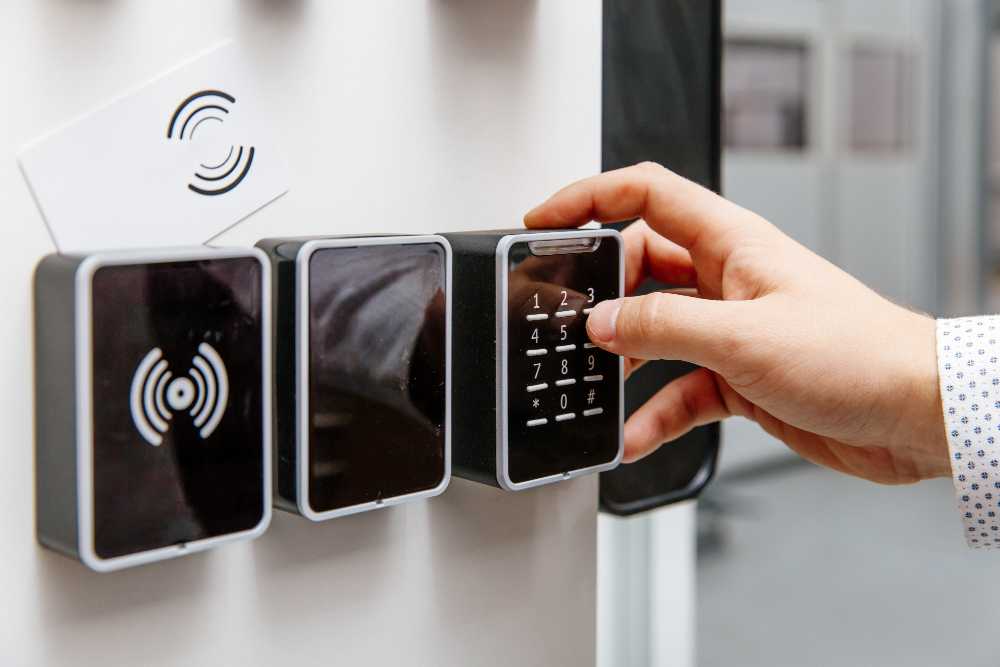Access control systems keep people, assets, and data safe. Physical access controls keep violent trespassers out of your building and logical security systems help prevent predators from accessing computer networks.
You can choose to host your access control system on-site or have an outside controller oversee it for you. In either case, you can use a distributed processor to reduce the load on your main system and ensure it works even if you lose internet connection.

Controlling Access to Locations
Using a central access control system allows you to “set and forget” who is allowed where, reducing the costs associated with traditional lock and guard security. Moreover, it allows you to control building and site functions such as lighting and temperature. These systems use cards, chip or fobs to verify a person’s identity and provide authorization to enter the premises. Some use biometrics to ensure that it is a specific person presenting the credentials and not someone impersonating them.
The main component of medium to large access control systems is the distributed processor (also known as a field controller). This computer makes decisions about who can enter and when, taking some processing load off the central system, making it faster. It also acts as a backup in case the connection back to the central system is interrupted. This allows the system to continue working without disruption. It can also reduce costs by eliminating the need for a guard to be present at each entry point.
Managing Access to Buildings
An access control system gives you full control over who enters your building. This allows you to keep your employees and visitors safer while reducing risk and helping to protect valuable equipment, information or other assets. It also helps you meet your duty of care to protect people and may help reduce insurance premiums. The central server that controls the door readers can be a desktop computer for small systems, redundant mirrored servers for larger ones or a distributed processor. Distributed processors, also known as field controllers, work independently from the main computer, deciding based on predetermined criteria whether to grant or deny access and removing a load on the main server. This also means that the system can still operate even if it loses its connection with the main server. The admin side of the system, also referred to as the management dashboard or portal, lets IT managers, office administrators or heads of security handle permissions from anywhere using an internet browser.
Managing Access to Assets
Discretionary access control (DAC) lets owners of data, networks and IT systems set policies that grant users permissions based on their job responsibilities and work processes. This type of logical access control helps protect against cyberattacks, breaches of privacy and stolen data. Logical access control also identifies people and entities using authentication tools like passwords, PINs, security tokens, biometric scans, license plate recognition and more. Multi-Factor Authentication (MFA), which requires two or more forms of identification, is commonly used to defend access control solutions as part of a layered defense.
A PACS with a management dashboard or portal lets office administrators, IT managers and security heads control access permissions for employees in multiple locations. This includes limiting employee access to specific areas and times of the day, as well as setting up credentials based on shifts or rank or job title. The system can even monitor and offboard contractors and vendors, removing their access to company documents or information.
Managing Access to People
Whether they are entering the building on foot or in a vehicle, employees need to prove their identity at the door to gain access to sensitive information and secure areas. This process is easily managed with an access control system that uses credentials like proximity cards or PINs.
In a Role Based Access Control (RBAC) system, an administrator delegates access privileges to employees by defining their roles in the organization. For example, a janitorial employee would not be granted access to student academic records, but a project manager might be. This allows for granular control of access and enforces key security principles such as least privilege and separation of privilege. RBAC systems work well for large organizations but are also scalable to smaller businesses. They allow companies to offer flexible schedules for employees and keep track of their comings and goings without having to be on-site. This helps maintain a secure environment while saving time and money for business owners.